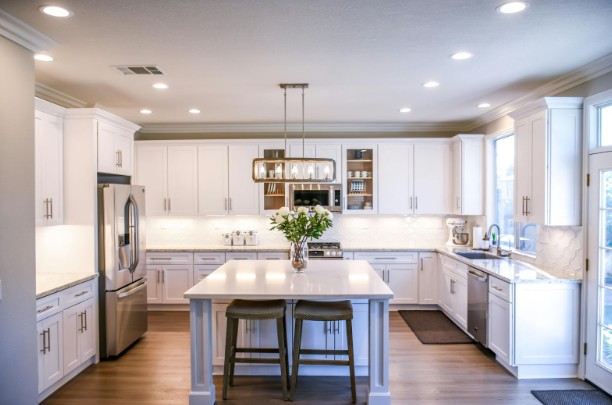People commonly associate Passive House with the futuristic design of energy-efficient new constructions that are sealed tight and powered by solar energy while using minimal energy. Many features of the Passive House design can be implemented during remodels of existing homes to obtain enhanced comfort alongside efficiency and long-term value increases.
The passive design principles offer homeowners who do not plan to rebuild the opportunity to cut energy bills through renovation additions that lower both carbon footprint and environmental strain.
What Is Passive House, and Why Does It Matter in Remodeling?
Germany developed Passive House design as an energy-efficient system that consists of five essential elements: super-insulated walls, airtight sealing, superior windows and doors, elimination of thermal conductive pathways, and ventilation that recovers heat. Such integrated strategies lower energy use between 90% and 100% relative to conventional residential buildings.
Complete Passive House certification of existing buildings appears challenging, but some of its core principles can be incorporated into strategic building enhancements through renovations like kitchen remodel in Bellevue WA which provide access to structural elements.
Insulation: The First Layer of Comfort
During any remodel, the addition of insulation stands as the simplest and least expensive method to incorporate Passive House principles. Building materials with high R-values should be used to insulate walls and ceilings found in attics and basements, which will enhance thermal retention throughout the entire year.
The selection between closed-cell spray foam and dense-pack cellulose depends on budget as well as the choice of wall construction. When you make structural modifications by opening exterior walls during remodeling projects, you have a superb chance to install improved insulation without investing in a complete demolition process.
Window Upgrades: Light, Comfort, and Efficiency
The primary spots where heat easily escapes from a home lie within its windows. Building homes to Passive House standards requires homeowners to exchange single-pane windows made of aluminum frames with triple-pane high-performance models. The new window types minimize drafts while maintaining indoor temperature stability simultaneously with better sound insulation, particularly for urban or suburban environment noise reduction.
When undergoing complete home renovations such as kitchen or sunroom projects, homeowners should choose windows that carry ENERGY STAR®-rated or Passive House certification. Homeowners seeking attractive, energy-efficient window hardware along with smart thermostats and lighting options should consider Build.com for their purchases because this retailer combines performance excellence with aesthetic options.
Air Sealing: The Invisible Energy Saver
Passive design benefits most significantly from effective air sealing methods. Small leaks happening around openings like electrical sockets and ducts, as well as windows, turn into substantial energy losses in upscale renovation projects. Most construction renovations enable the inclusion of air sealing methods, particularly during operations that require wall access.
Techniques include:
Applying low-expansion foam around window frames
Using gaskets on electrical outlets
Installing airtight drywall systems
Sealing penetrations around plumbing and HVAC systems
The minor modifications of these attributes produce substantial impacts. Correct air sealing techniques improve home comfort and decrease drafts while maximizing the effectiveness of insulation materials and heating, ventilation, and air conditioning devices.
ROI: Is It Worth It?
When Passive House principles enter residential construction remodels, the financial return represents one of the best options for reinvestment. Energy savings become measurable through several years during the first few years of use, mostly when temperatures are low and utility rates remain unstable in cold regions or high-cost energy zones.
Energetic house pricing goes up when homeowners focus on efficiency, which produces better indoor air quality along with longer-lasting materials from improved moisture regulation. The present health-focused and eco-sensitive market finds merit in these advantages.
Integrating key elements next to your chosen remodeling scope will yield maximum efficiency benefits if planned for proper alignment in your project.
Ventilation: Breathing Clean Without Wasting Energy
Traditional homes use open-air leakage for ventilation, but this method produces undesirable efficiency and indoor air quality effects. Homebuilders can find passive house design by applying airtight sealing to homes and combining it with heat recovery ventilation systems (HRV) or energy recovery ventilation systems (ERV).
Each remodeling situation should consider complete ventilation system updates, yet some parts of the home can benefit from enhanced ventilation equipment. The installation of humidity-sensitive fans and strategic ventilation in humid areas (kitchens and laundry rooms) replaces obsolete ventilation products that do not break down indoor pollutants effectively while maintaining energy efficiency.
The construction of ductwork becomes feasible when renovating walls and ceilings, which creates a strong ventilation system by reducing drafts while maintaining energy efficiency.
How to Prioritize Passive House Upgrades in Stages
A full-scale energy transformation remains beyond the readiness level of some homeowners, although it is acceptable. Scheduled maintenance projects represent the ideal timeframe for implementing passive principles as part of cost-efficient improvements.
Here’s a sample staged approach:
Phase 1—Low Disruption: Air sealing, outlet gaskets, attic insulation, weather stripping
Phase 2—Remodel-Driven: Wall insulation, upgraded windows and doors, ventilation additions
Phase 3—Whole-System: HRV/ERV installation, HVAC optimization, solar readiness
The employment of experienced professionals from Bezruchuk Inc as general contractor results in proper implementation of construction phases that optimize ROI and performance based on home-specific requirements.
Remodeling With the Future in Mind
People need not construct an entire Passive House structure to obtain its key advantages. With thoughtful planning and the guidance of home renovation experts, it’s possible to achieve meaningful improvements to comfort, performance, and sustainability—one room at a time.
Passive House principles will help create a smarter, more resilient home during any upgrade project, including kitchen renovations or window replacements and insulation improvements in multifunctional home modifications.
Final Thoughts
Homeowners seeking Passive House integration for their remodeling project do not need to dismantle everything first. People working on specific areas such as insulation and sealed air at homes and windows and ventilation will achieve meaningful improvements that boost comfort while enhancing efficiency and long-term value. Proper planning alongside support will generate important energy savings from all kinds of remodeling projects to create a home that suits future needs.










